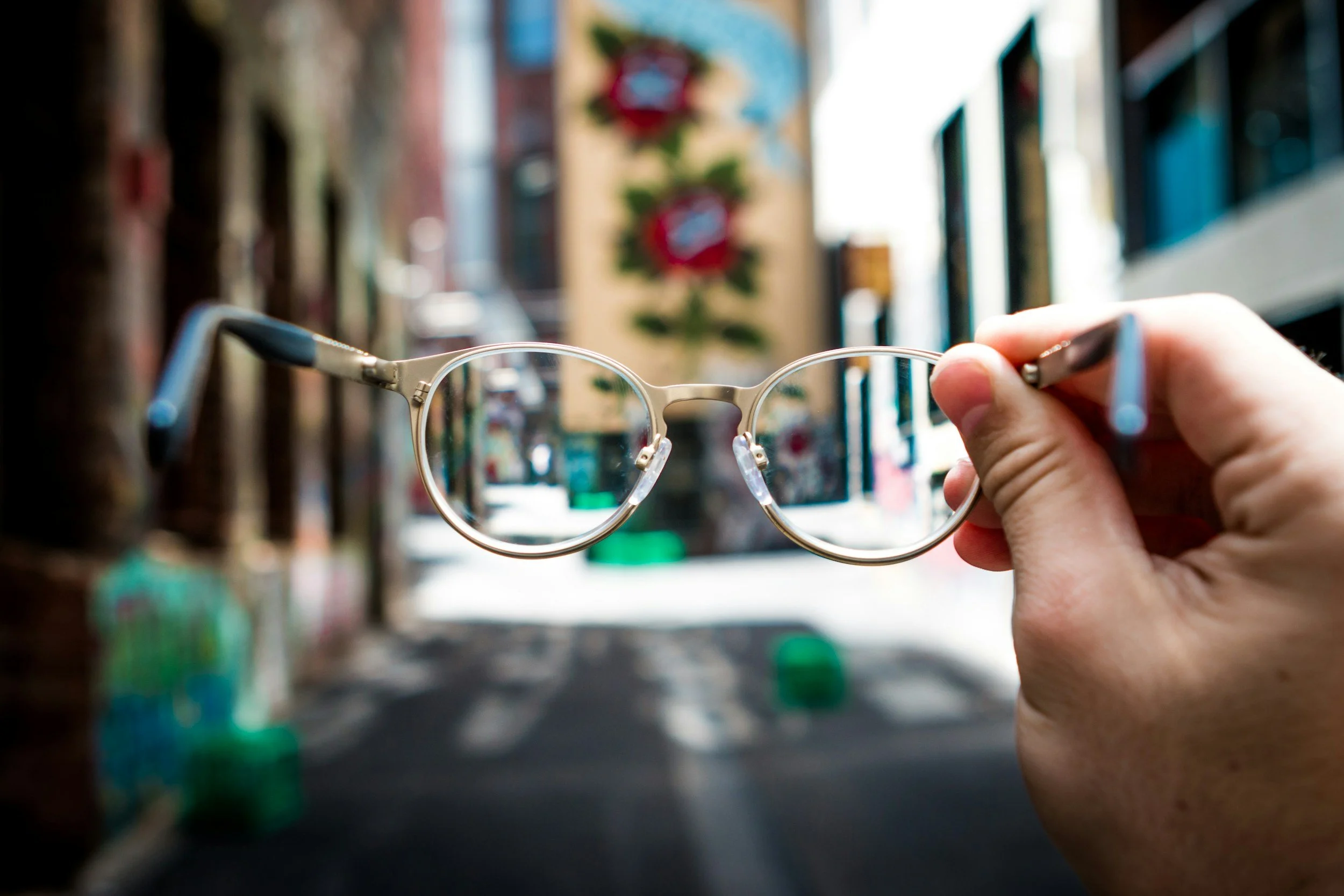I Can See Clearly Now
Four-eyes.
That was my second-grade brain’s biggest fear as I left the eye doctor’s office one Summer morning in the late 1970’s. I needed glasses. And that’s exactly what they were going to call me.
I was certain of it.
I sat in the front seat of the car in tears, my mom doing her best to console me. I was a broken little boy. Then mom did something genius—she let me try on her glasses. When I did, tears turned to shock. A world opened to my eight-year-old brain.
I could see.
I mean—I could see before. But now I could really see. The leaves on the trees had defined shapes. I could make out individual blades of grass. When mom handed me her glasses, and I saw the world for the first time.
It’s strange to think that before the 13th century, this moment of clarity wasn’t possible for anyone. Italy saw the invention of the first wearable eyeglasses, around 1285. For thousands of years, people with poor vision simply... lived with it. Ancient Romans, like Seneca, knew curved glass could magnify, but it took medieval Italian artisans to create the first spectacles with convex lenses that sat on your nose.
Even then, those early glasses were essentially magnifying lenses balanced precariously on the face—no comfortable arms extending over the ears until a British optician named Edward Scarlett developed them in 1727. Imagine trying to play volleyball with those!
Volleyball, Broken Glasses, and Contact Lenses
Eleven years after my first glasses, I was in Bible school. Our school had a tradition of intramural volleyball, which I honestly hated. For most of my teenage years, I was dealing not only with poor vision (albeit somewhat corrected with glasses) but also with a tall, gangly body my brain had yet to learn how to manage. My lack of hand-eye coordination didn’t lend itself to any sport involving a ball.
During one match, a former NFL player slammed a volleyball into my face, breaking my glasses clean in half. That’s when I decided it was time to try contact lenses. (Thank you, Bob Glazebrook, wherever you are today. You did me a favor.)
The history of contact lenses is more fascinating—and frankly, more horrifying—than that of glasses. Leonardo da Vinci sketched the concept in 1508, but who in their right mind would put a piece of glass directly on their eyeball? In the late 1880s, a German glassblower named F.A. Müller did just that. He created the first real contact lenses—heavy blown-glass shells that covered the entire eye. Because of discomfort, these early lenses were only usable for minutes at a time.
In the 1930s plastic contacts emerged. Even then, they weren’t the soft, disposable kind we use today. Those arrived in 1971, when soft contact lenses were approved in the U.S.— 460 years after da Vinci first imagined them.
Cataracts? Already? Seriously?
The eye doctor walked into the room at a recent follow-up and said, “You’re young to be having cataract surgery.” I smiled in agreement but internally screamed, I know! I’ve been saying this all along!
A few months earlier, a routine visit had revealed cataracts in both eyes, and they were advancing quickly. After consulting with an eye surgeon, I underwent the quick and relatively painless procedure—on both eyes.
The Long and Winding Road to Modern Surgery
The history of cataract surgery makes my experience feel like a luxury spa treatment by comparison. Imagine this: around 600 BCE in ancient India, a physician named Sushruta performed the earliest recorded vision-correcting surgery by using a curved needle to push the opaque lens out of the way—a technique called "couching." This crude method, which merely displaced the cloudy lens rather than removing it, remained the standard for over 2,000 years. Patients needed extremely bright light to see afterward and still required thick glasses.
In the 1740s, European surgeons finally began removing the cloudy lens instead of simply shoving it aside. But even this improvement left patients needing ultra-thick “cataract glasses” to compensate. It wasn’t until the mid-20th century that a British ophthalmologist, Sir Harold Ridley, pioneered the first artificial intraocular lens implant.
Ridley’s inspiration came from a weird source—World War II RAF pilots. He noticed that when acrylic plastic fragments from aircraft canopies became lodged in pilots’ eyes, the material didn’t cause rejection. This led him to implant the first artificial lens in a human eye in 1949. The innovation initially faced significant skepticism.
Today, the technique used on me was phacoemulsification, invented by Dr. Charles Kelman in 1967. Using an ultrasonic probe, the surgeon broke up the cataracts inside my eyes, suctioned out the pieces through tiny incisions, and inserted foldable artificial lenses. The whole procedure took about 15 minutes per eye—a far cry from being held down while someone poked a needle into your eye without anesthesia.
I Can See Clearly Now (For Real. 50 Years Later)
This morning, I walked my dogs around the dew-laden 16th green of the golf course our condo overlooks. With my naked eyes, I could see everything. Details I’ve never been able to experience even with the best corrective lenses came alive as the sun rose. I can’t fully explain how exhilarating that is to someone who has lived 57 years in blurry. Sight really is a magical thing.
From second-grade glasses to cataract surgery, my relationship with vision has been a journey through centuries of scientific innovation — compressed into my few decades of personal experience. Public funding has largely supported the researchers whose hard work has enabled each advancement, from childhood vision impairment to contact lenses and implants. I’m among the many direct beneficiaries.
The U.S. National Eye Institute has supported groundbreaking innovations like the Argus II “bionic eye” for people with certain types of blindness. Military research has driven advances in laser eye surgery. Global health organizations have funded initiatives that make cataract surgery accessible in developing countries. Without this support, millions of people would still live in a blurry world—or worse, in darkness.
A View Worth Funding
Today, scientific research funding faces drastic cuts under the current administration. And as someone who can now see individual blades of grass—without help—for the first time since childhood, I can testify: the value of this research is immeasurable.
From ancient couching needles to modern laser probes, the journey to restore human vision has been long and remarkable. But it’s not over. Every dollar invested in vision research brings someone else’s world into focus, just as my mother’s simple act of sharing her glasses once did for me.
That’s a view worth funding.
Also — you are doing better than you think.

